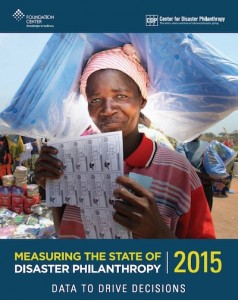
They Move Slowly
Gulf Coast residents who had complained about the glacial speed with which BP paid claims for losses related to the oil spill now appreciate that everything is relative. Since the federal government has assumed responsibility for the claims payments, the process has slowed down. The extent of the anger over the delays and miscommunications became clear at a meeting last month in Orange Beach, Alabama attended by roughly a thousand small business owners from Alabama and Florida’s Gulf Coast. Mayor Tony Kennon called the meeting which was attended by the federal government’s “claims czar” Kenneth Feinberg. Among the many stories related by small business owners, some common themes emerge. The first concerns the severe consequences of delayed claims payments.
As we know from our experience in disaster recovery, cash flow is critical to the survival of small businesses. Florida Governor Charlie Crist was correct to criticize the claims process, saying “I think it would be more appropriate for us (the governor and cabinet) to co-sign a letter encouraging increased urgency. It’s becoming increasingly difficult for (some businesses) to be able to hang on. Twenty billion (the sum of money in the BP claims fund) is no small sum of change, but it’s no good unless it’s utilized.”
Consider what delayed payments mean for employment. In most states, the law requires that employees be paid their wages within two weeks of performing their work. Without the cash to pay wages, small businesses have no choice but to lay off staff. They simply cannot run the risks associated with vague promises for claims reimbursement when they have legal obligations to fulfill.
The second key theme relates to our evolving paradigm of economic losses and physical disasters. After 9-11, the Federal Emergency Management Agency was unable to come to grips with the consequences of business interruption and income losses to small businesses. Their view was the economic losses correlated with physical damage. But this is an anachronism: certain service-related businesses located in the World Trade Center suffered total losses of property. But because their work was not location-dependent and because they had appropriate backup, they were able to resume operations. Other businesses, slightly more removed from the scene of the disaster, such as restaurants and retail shops, sustained little or no physical damage. But the interruption of convenient access to their businesses caused severe losses in income. Nine years later and our government has made no progress in its understanding of business interruption losses. The administrator of the BP claims fund, Kenneth Feinberg had stated that claims from business not in the immediate proximity of the disaster would not be paid. The problem, of course, is that the entire Gulf Coast tourism industry lost business this summer because of perceptions about the oil spill, even though many of the beaches were free of oil.
The third theme relates to how we compensate losses incurred by businesses with very short operating histories. The Daily Beast reported the story of Keith Brooks who had launched a new web-based business, YourFloridaEmeraldCoast.com with committed advertisers on board – until the Deepwater explosion. His claim for business losses was challenged, but finally documented to the satisfaction of the BP adjuster. Then it was turned over to the federal government’s management and the process began all over again. In the first edition of Prepare for the Worst, Plan for the Best: Disaster Preparedness and Recovery for Small Businesses, we presented the example of the Lower Manhattan pizza parlor that opened for its first and last day of business on September 10, 2001. Our startup businesses are the most vulnerable to disasters and yet we need them to resume job growth.
Finally, we need to stop fighting old battles and begin to look forward. In an apparent reference to the 9-11 disaster (in which the famous Dunkin Donuts franchise in Oregon successfully applied for a disaster relief program), Feinberg states that if proximity to the oil spill was not given relevance in the claims process, the claims center would “be inundated with claims from 50 states.” True enough, but is it fair that small businesses in the Gulf Coast states should be punished as fearful government employees made blunders with claims payments in previous disasters?
If there is one lesson from this experience, it is that our inability to learn from our past is becoming increasingly costly, both in human and in financial terms. We need a comprehensive and forward-looking plan for disaster relief programs.







